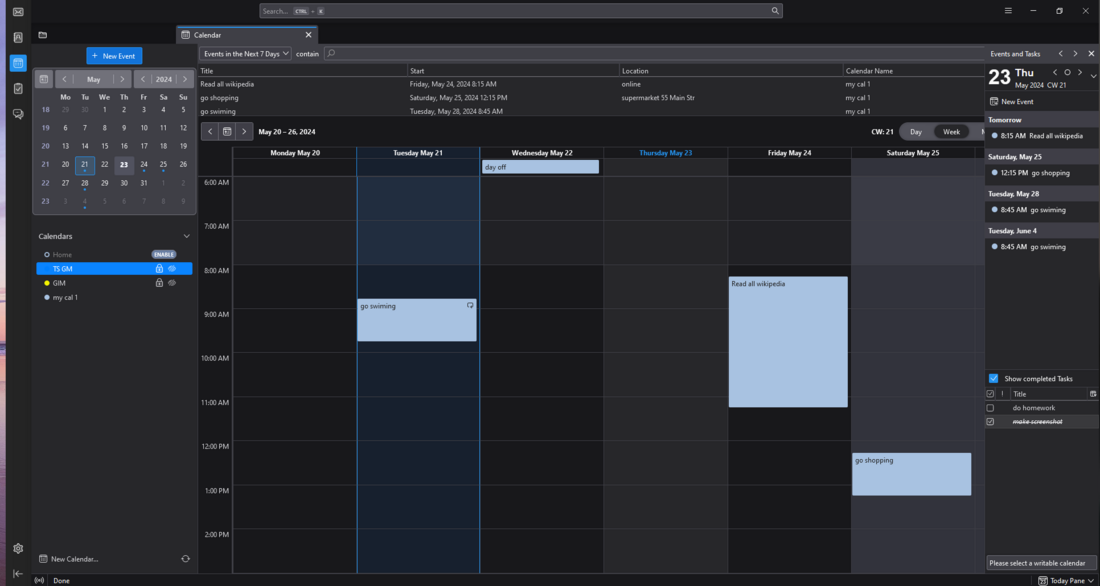Top Qs
Timeline
Chat
Perspective
Lightning (software)
Free software From Wikipedia, the free encyclopedia
Remove ads
Lightning is a project from the Mozilla Foundation originally designed as an extension ("add-on") that adds calendar and scheduling functionality to the Mozilla Thunderbird mail client and SeaMonkey internet suite. It superseded the previous Mozilla Sunbird and the older Mozilla Calendar extension.[4] With version 38 of Thunderbird, the Lightning add-on was integrated and preloaded by default;[5] since version 78 of Thunderbird (released 2020), Lightning is part of Thunderbird and no longer an add-on extension. Lightning is compatible with iCalendar calendars.
Remove ads
History
Summarize
Perspective
The Lightning project was announced on December 22, 2004, in an effort to integrate Mozilla Sunbird into Mozilla Thunderbird.[6] Sun Microsystems contributed significantly to the Lightning Project to provide users with an alternative free and open-source choice to Microsoft Office by combining OpenOffice.org and Thunderbird with the Lightning Extension.[7] In addition to general bug-fixing, Sun focused on calendar views, team/collaboration features and support for the Sun Java System Calendar Server.[8]
Version 0.9 was the last planned release for Thunderbird 2. A calendar was originally to be fully integrated into Thunderbird 3, but those plans were changed due to concerns with the product's maturity and level of support.[9][10] Lightning 1.0b2 is compatible with Thunderbird 3.1, Lightning 1.0b5 is compatible with Thunderbird 5 and 6, and Lightning 1.0b7 is compatible with Thunderbird 7.[11][12]
Lightning 1.0 was released to the public on November 7, 2011. It was released alongside Thunderbird 8.0. Following that, every Thunderbird release has been accompanied by a compatible Lightning point release. Lightning finally started shipping with Thunderbird with version 4.0, on Thunderbird 38.0.1 released in 2015.[5][13] With the 2020 release of Thunderbird 78, Lightning is now a permanent part of the program.[14]
Remove ads
See also
References
External links
Wikiwand - on
Seamless Wikipedia browsing. On steroids.
Remove ads

